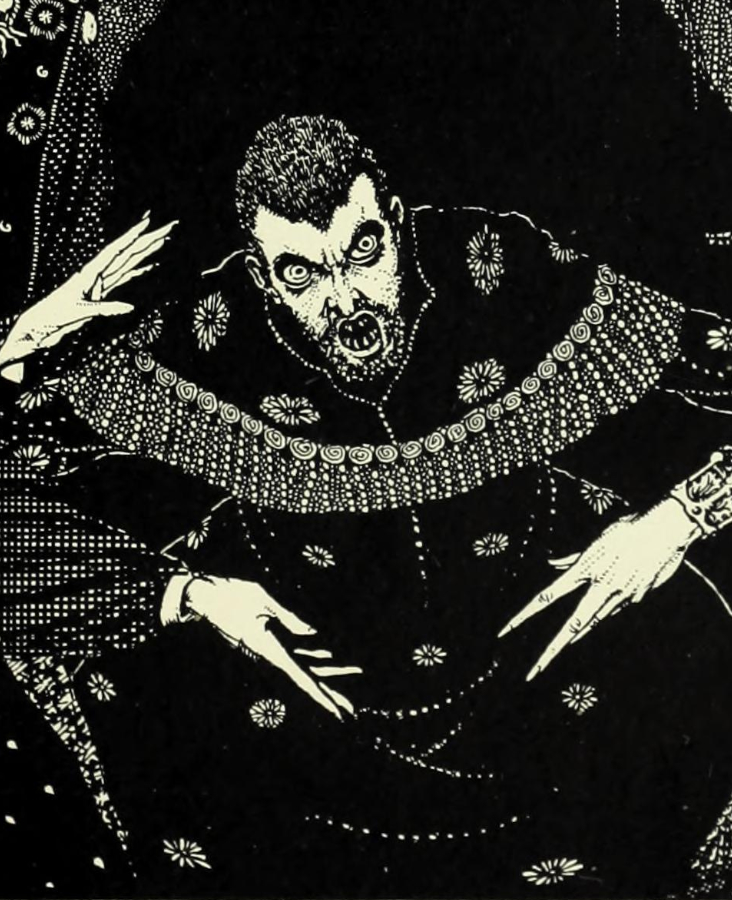In “The Fall of the House of Usher”, Poe’s unnamed narrator is persuaded by Roderick Usher’s desperation for companionship. Though sympathetic and helpful, the narrator is continually made to be an outsider, watching the narrative unfold without fully becoming a part of it. “The Raven” follows an unnamed narrator on a dreary night in December who sits reading “forgotten lore” by the remains of a fire as a way to forget the death of his beloved Lenore. “Ligeia” follows an unnamed narrator whose first wife Ligeia and second wife Rowena die. When Rowena dies, the distraught narrator watches her transform into Ligeia. In both “The Black Cat” and “The Tell-Tale Heart”, an unnamed narrator carefully conceals his murder and believes himself unassailable, but eventually breaks down and reveals himself, impelled by a nagging reminder of his guilt. “The Black Cat” also features questions of sanity versus insanity and warns against the dangers of alcoholism. In “The Pit and the Pendulum”, the unnamed narrator describes his experience of being tortured. Unnamed narrators also narrate “The Murders in the Rue Morgue”, the sea tale “MS. Found in a Bottle”, “Morella”, “Metzengerstein”, and “The Man of the Crowd”.
| Alias Unreliable Narrator, Unnamed Narrator |
| Real Names/Alt Names Unknown |
| Characteristics Horror Host, Literary Characters, Realism and Victorian Age |
| Creators/Key Contributors Harry Clarke, Edgar Allen Poe |
| First Appearance “Morella” in Southern Literary Messenger (April 1835) |
| First Publisher Southern Literary Messenger |
| Appearance List Collections: Tales of Mystery and Imagination (1923). |
| Sample Read Tales of Mystery and Imagination [Internet Archive] |
| Description In “The Fall of the House of Usher”, Poe’s unnamed narrator is persuaded by Roderick Usher’s desperation for companionship. Though sympathetic and helpful, the narrator is continually made to be an outsider, watching the narrative unfold without fully becoming a part of it. “The Raven” follows an unnamed narrator on a dreary night in December who sits reading “forgotten lore” by the remains of a fire as a way to forget the death of his beloved Lenore. “Ligeia” follows an unnamed narrator whose first wife Ligeia and second wife Rowena die. When Rowena dies, the distraught narrator watches her transform into Ligeia. In both “The Black Cat” and “The Tell-Tale Heart”, an unnamed narrator carefully conceals his murder and believes himself unassailable, but eventually breaks down and reveals himself, impelled by a nagging reminder of his guilt. “The Black Cat” also features questions of sanity versus insanity and warns against the dangers of alcoholism. In “The Pit and the Pendulum”, the unnamed narrator describes his experience of being tortured. Unnamed narrators also narrate “The Murders in the Rue Morgue”, the sea tale “MS. Found in a Bottle”, “Morella”, “Metzengerstein”, and “The Man of the Crowd”. |
| Source ○ |

